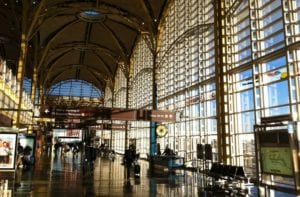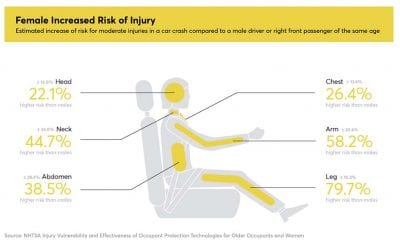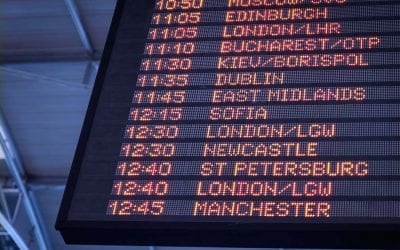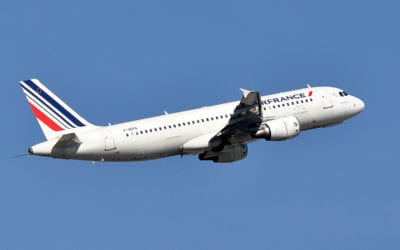The airport tax battle pits easy money from Congress against local taxation from voters.

Airports are focused on fleecing the greater American public
Airports have resorted to distorting what passengers and the airline industry are saying about airport taxes. No passenger I know of has ever asked to pay more taxes. No airline has asked to pay greater landing fees and gate rents.
The airports justify their mission to raise airport taxes because the Passenger Facility Charge (PFC, otherwise known as a hidden, unknown airport tax) to them is simply a user fee. It is charged to passengers who pass through the terminals, take off from the runways, park, arrive and depart in taxis, rent cars, and sleep in local hotels.
The airport associations in DC also show their true colors when they say, “Taxpayers won’t have to pay a dime for these much-needed infrastructure investments because the PFC is paid by the passengers who use these facilities.” Airport executives only want other peoples’ money to fund their oversized dreams.
On the other hand, airports fear their own taxpayers. These businesses often engage in political battles with airports and have no intention of funding any expansion. Neighbors have concerns about airport-generated issues that affect the quality of life in those neighborhoods, such as traffic and noise. And businesses want only lower costs, not new taxes. Thus, federal money, even with tight strings attached, is better for airports than dunning local taxpayers.
Who is the bigger user of the airport?

With no airport, there would be no businesses, no tax income, or infrastructure. Fewer parking lots or multimillion-dollar office buildings. No new hotels. Lower ride-share and taxi revenue. At Dulles Airport that means cows grazing in rolling fields, just like they do today only 20 minutes from the bustle of the airport.
READ ALSO: You have rights when airlines make changes to booked flights
Hotels and parking companies pay something like $2 for every bus that shuttles passengers to parking spots and accommodations. However, in most cases, these businesses pay nothing else toward the operation of the airport.
Money from Congress is better than funding raised through taxes on locals.
If dollars drop from DC, it is found money. The only person the airport needs to thank is their congressman and senator. It is much harder to ask for tax dollars from constituents who live in their districts and politicians see on the street every day. It is even more difficult to raise taxes for businesses that make donations to their campaigns.
Airports and their supporters are so determined to get more money from the federal government that they have resorted to stretching the truth. A recent headline in an online newsletter said, “Airlines Confirm: It’s Time to Increase the PFC.” Now, there is a real stretch.
The headline is a lie.
I have never heard any airline say that airports should collect more in airport taxes from their passengers. The airport may as well say that passengers beg for more airport taxes.
Airports also claim that “Airline passenger data underscores the need to modernize passenger facility charge.” It posited a claim that passenger data underscores the need for more airport taxes (or higher PFCs). The only problem with this claim is that it is not true. The opposite is true.
Though the base amount of the PFC has not been increased, the flying public based on enplanements has grown 400 percent from 1976 to 2016. Simply stated, the PFC income has increased far more than inflation. At the same time that the number of passengers was growing, the number of take-off and landings were decreasing. That means that per airport operation the need for runways and gate capacity has decreased.
The current funding levels are sufficient to support airport construction for decades.
This continued increase in passenger traffic has increased airport income. The need to invest more in airport infrastructure to help process the ever-growing number of airline passengers needs no increase in airport taxes or fees.
Another mantra of airports is that “Congress has not increased airports’ primary funding mechanism in almost two decades.” That may be true, but the congressmen that created the system of airport taxes and fees passed a funding law providing new funding with every additional passenger. Plus, when the first PFCs were introduced most flights were point-to-point. Today, about 70 percent of flights are connecting flights, Hence, the PFCs for most flights have doubled. There is no funding shortfall.
Federal airport taxes are not the greatest type of income — local funding is.
The FAA’s airport revenue figures show that in 2017 PFCs provided just over 11 percent of airport revenue. Most urban airport income came from operating revenue, which covers just over 75 percent of costs. Next, bonds and grants provide another 7.5 percent.
No taxes come from the surrounding localities. In addition, municipal bonds are guaranteed by PFCs for future growth. Passengers enjoy none of the benefits of their tax payments. Nearby businesses profit every day from their proximity to the airport.
ALSO ON TRAVELERS UNITED: Big passengers present big problems for airlines
Federal money is inefficient for local projects
Another problem with federal money is that it comes with strings attached and arcane restrictions on how money can be spent. It cannot go to off-airport structures or airport accessibility. Passenger facility fees and other federal funds cannot be used for train or metro access to airports. Hence, airports construct illogical transport systems in order to qualify for federal funding rather than providing those they tax with the lowest cost and best systems. San Francisco and Dulles Airport public transit solutions are poster children for twisted funding.


Charlie Leocha is the President of Travelers United. He has been working in Washington, DC, for the past 14 years with Congress, the Department of Transportation, and industry stakeholders on travel issues. He was the first consumer representative to the Advisory Committee for Aviation Consumer Protections appointed by the Secretary of Transportation from 2012 through 2018.



